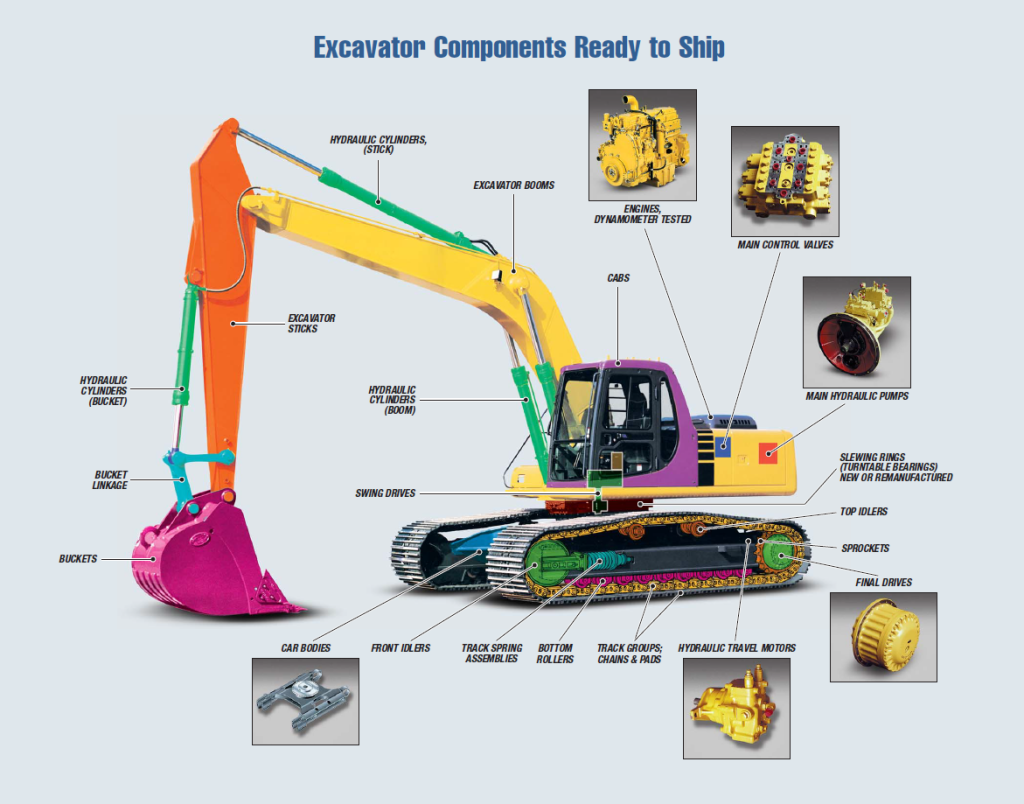excavator parts diagram
Hydraulic excavators are vital heavy machinery used in construction, mining, and various earth-moving projects. They are known for their versatility and power, enabling them to perform a wide array of tasks. A fundamental aspect of understanding hydraulic excavators is familiarizing yourself with their components. This article will explore the main parts of a hydraulic excavator and their functions.
excavator parts diagram

Key Components of a Hydraulic Excavator
Boom
The boom is a long arm that extends from the main body of the excavator.
It provides the necessary reach for various digging and lifting operations.
The boom is pivotal for maneuverability and can be raised or lowered to adjust the working height.

Stick (or Arm)
Attached to the end of the boom, the stick extends further and allows for precise digging.
It connects the bucket to the boom and is crucial for controlling the depth of excavation.
The stick can also be known as the dipper arm, which enhances its functionality.
Bucket
The bucket is the excavator’s primary tool for digging and lifting materials.
Different types of buckets can be used for specific tasks, such as digging trenches or handling loose materials.
Buckets can come in various sizes and shapes, depending on the nature of the job.
Cab
The cab is where the operator sits and controls the excavator.
It is equipped with various controls for operating the boom, stick, and bucket.
Modern cabs often include advanced technology for improved visibility and comfort.
Tracks
The tracks allow the excavator to move across different terrains.
They provide stability and traction, especially on uneven surfaces.
There are two types of tracks: steel and rubber, each serving different operational needs.
Hydraulic System
The hydraulic system is the heart of the excavator, enabling its powerful movements.
It consists of hydraulic pumps, cylinders, and fluid reservoirs.
This system allows for smooth operation of the boom, stick, and bucket through hydraulic fluid pressure.
Counterweight
The counterweight is a heavy block located at the rear of the excavator.
It balances the machine during operation, preventing it from tipping over.
The counterweight is crucial when performing tasks that require significant lifting force.
Swing Mechanism
The swing mechanism allows the excavator to rotate its upper structure (the cab and attached components) 360 degrees.
This feature enhances the machine’s versatility, enabling it to work in tight spaces without repositioning.
The swing function is vital for tasks such as loading trucks or digging trenches.
Conclusion
Understanding the various parts of a hydraulic excavator is essential for both operators and those involved in construction and heavy machinery industries. Each component plays a specific role in enhancing the machine’s efficiency and effectiveness. Whether it’s the boom providing reach, the bucket performing digging tasks, or the hydraulic system powering its movements, each part is integral to the overall function of the excavator. By familiarizing yourself with these components, you can better appreciate the complexity and capabilities of hydraulic excavators in modern construction and earth-moving applications.